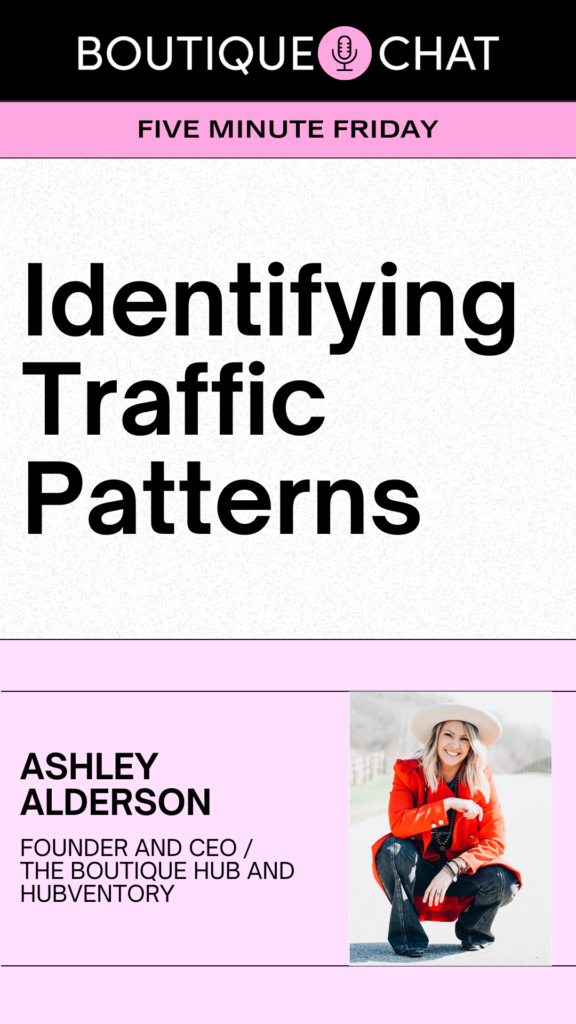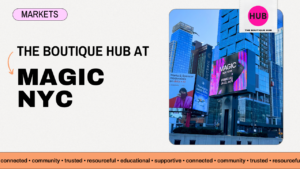APPLE PODCAST | SPOTIFY | YOUTUBE
Whether you’re an online business or a brick-and-mortar store, what I’m talking about today is one of the most important things you can do as a CEO and leader of your business. I’m talking about identifying traffic patterns—and then figuring out what’s working and what needs improvement. Listen in as I share a couple of quick tips on where to look for this crucial information so you can get to work!

Identifying Traffic Patterns
For Online Businesses
Running an online store might seem as simple as putting up a website and expecting customers to flock to it. Unfortunately, it doesn’t work that way. Much like a physical storefront, your online store requires constant attention. You need to be actively involved in analyzing what’s working and what isn’t. Here’s how to get started:
- Utilize Google Analytics (GA4): One of the most effective tools at your disposal is Google Analytics. It provides a wealth of data that can help you understand the traffic patterns on your website. Some key metrics to focus on include:
- Unique Visitors: Track how many people visit your site during specific time frames (weekly, monthly, quarterly, yearly). This gives you a baseline to measure growth or identify potential issues.
- Dwell Time: This metric indicates how long visitors stay on your site. The longer they stay, the more engaged they are. If your dwell time is low, it could be a sign that visitors aren’t finding what they’re looking for, or your site isn’t resonating with them.
- Bounce Rate: A high bounce rate means people are leaving your site quickly after arriving. This could indicate a disconnect between what they expected and what they found. Work on improving this by making your website more appealing and relevant to your target audience.
- Top Pages and Exit Points: Identify which pages attract the most visitors and where they’re dropping off. If you notice a significant drop-off on certain pages, assess the calls to action and consider adding alternatives to keep visitors engaged.
- Optimize Call to Actions (CTAs): Make sure each page on your site has a clear, primary call to action. If a visitor isn’t interested in that offer, provide a secondary option, like related products or recommendations. This helps to reduce exits and keeps people exploring your site.
For Brick-and-Mortar Stores
Understanding traffic patterns in a physical store is just as important as in an online business. Here are some strategies to help you analyze and improve your store’s layout:
- Map Out Your Store: Create a detailed map of your store’s layout, including where tables, rounders, and other displays are located. Observe how customers move through the space—do they tend to go right or left upon entering? Do they head straight to the back or linger near the front?
- Identify Hot and Dead Zones: Pay attention to areas where customers frequently stop to browse or make purchases (hot zones) and areas that seem to get little to no traffic (dead zones). Consider how you can rearrange your store to encourage more exploration and interaction with your products.
- Adjust Based on Observations: Once you’ve identified traffic patterns, you can make changes to enhance the shopping experience. For example:
- Place high-demand or new items near the front of the store.
- Use displays to slow customers down and encourage them to explore more areas.
- Position complementary items near fitting rooms or checkout counters for easy add-ons.
- Merchandising for Impact: Both your storefront window and your website’s homepage should be treated as prime real estate. The right merchandising can significantly influence traffic patterns, so think carefully about what you’re showcasing in these spaces.
Start with the Basics
Before you dive into re-merchandising or making major changes, it’s essential to establish a baseline understanding of your traffic patterns. Gather data, observe customer behavior, and analyze your metrics. Once you have a clear picture of what’s happening, you can begin making adjustments that will help increase engagement, boost sales, and build customer loyalty.
Let’s Connect #AskAshley
- Have a question or guest recommendation? Let us know your feedback directly here!
- Do you love the Boutique Chat Podcast?! Subscribe to our podcast and after that, leave us a review on iTunes Apple Podcasts here!
Must Have Resources
- The Boutique Hub: Website | Facebook | Instagram | Pinterest | TikTok | YouTube
- Boutique Summit 2024
- Small Business Marketing Handbook
- Small Business Hiring Handbook
- Brand Owner Basics Masterclass
- Tradeshow Marketing Handbook
- 2024 Trade Show Calendar
- Boutique Hub Black
- Hubventory.com
Recent Posts:
- Your Boutique Has a Voice. It’s Time Your Marketing Did Too.
 “Your boutique already has a voice customers trust. SellSavvy helps you make sure your marketing finally sounds like it.” Your audience doesn’t need more noise — they want more you. They want connection, personality, and that one-on-one feel that made them fall in love with your brand in the first place. SellSavvy helps you deliver that at scale, turning every customer interaction into an opportunity to sell smarter — not louder.
“Your boutique already has a voice customers trust. SellSavvy helps you make sure your marketing finally sounds like it.” Your audience doesn’t need more noise — they want more you. They want connection, personality, and that one-on-one feel that made them fall in love with your brand in the first place. SellSavvy helps you deliver that at scale, turning every customer interaction into an opportunity to sell smarter — not louder. - The Boutique Hub at MAGIC NYC
 The Hub Team is heading to MAGIC New York again and we couldn’t be more excited! With over 320+ brands, you are sure to find more MAGIC in a (New York) minute!
The Hub Team is heading to MAGIC New York again and we couldn’t be more excited! With over 320+ brands, you are sure to find more MAGIC in a (New York) minute! - The Boutique Hub is Heading to PGA Orlando!
 The Boutique Hub is heading to the PGA Show in Orlando. Tapping into the fast-growing golf apparel market projected to hit $13B by 2032. Golf fashion is evolving beyond the course, creating big opportunities for boutique retailers. The Hub team will be connecting with brands, discovering new trends, and offering live education and retail audits at the event on July 28th. Boutique owners interested in athleisure, activewear, or preppy styles should consider adding golf-inspired looks to their lineup. VIP perks available through The Hub’s exclusive registration link.
The Boutique Hub is heading to the PGA Show in Orlando. Tapping into the fast-growing golf apparel market projected to hit $13B by 2032. Golf fashion is evolving beyond the course, creating big opportunities for boutique retailers. The Hub team will be connecting with brands, discovering new trends, and offering live education and retail audits at the event on July 28th. Boutique owners interested in athleisure, activewear, or preppy styles should consider adding golf-inspired looks to their lineup. VIP perks available through The Hub’s exclusive registration link.




